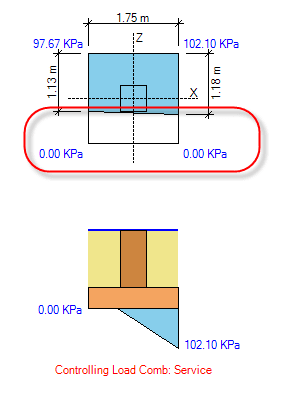h-badawy
Structural
- Jan 8, 2015
- 132
dear Experts,
i am designing isolated footing for steel car parking shade , and i checked on the bearing capacity and the sliding & overturning stability for the footing with 1.5 factor of safety and everything safe , but the thing is that the stress between the footing and soil still tension and reached to almost half of the footing , is there any limitation in any code to control this tension or if all stability and bearing checks are ok no need to worry about this tension stress?.
Thank you
i am designing isolated footing for steel car parking shade , and i checked on the bearing capacity and the sliding & overturning stability for the footing with 1.5 factor of safety and everything safe , but the thing is that the stress between the footing and soil still tension and reached to almost half of the footing , is there any limitation in any code to control this tension or if all stability and bearing checks are ok no need to worry about this tension stress?.
Thank you

